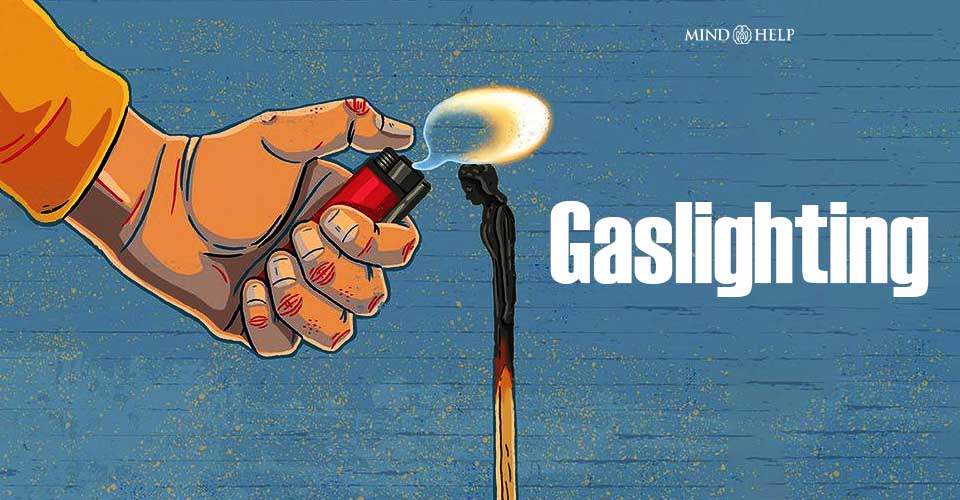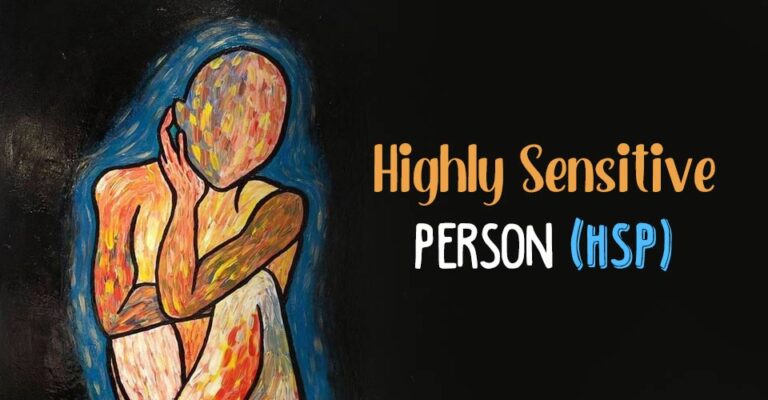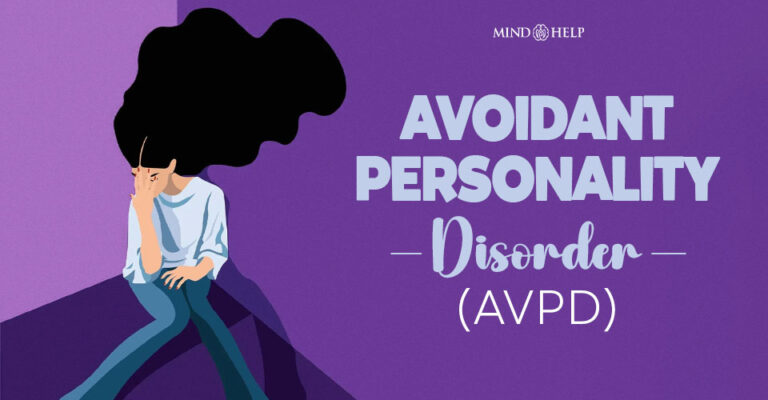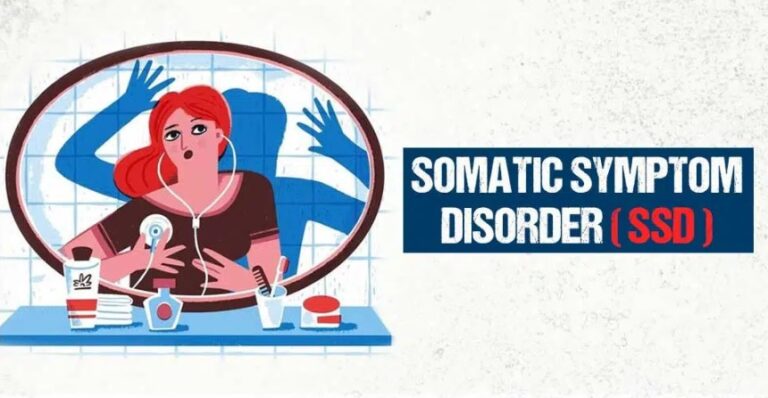Ever been made to question your own thoughts, feelings, or even your reality? That could be gaslighting, a psychological tactic used to control, confuse, and intimidate. Let’s learn more about it below!
What Is Gaslighting?
It is a type of emotional and psychological abuse commonly observed in toxic relationships. The abusive person using the strategy attempts to covertly manipulate another individual or a group of people by making them question their own memories, judgment, and sanity.
The victim may seriously doubt their own perception of reality, experience high levels of anxiety, feel confused, and may even have trouble trusting themselves.
The gaslighter may use this tactic to implant seeds of doubt in the targeted victim(s) to acquire control and power over them. This form of manipulation is observed in a wide range of relationships, like parents and offspring, amongst siblings, and even friends.
However, the phenomenon is mostly seen in unhealthy romantic relationships and marriages where it can be extremely damaging.
According to a study 1 Kutcher, S. P. (1982). The Gaslight Syndrome. The Canadian Journal of Psychiatry, 27(3), 224–227. https://doi.org/10.1177/070674378202700310 , “The Gaslight Syndrome, a scenario in which one partner of a conjugal unit attempts to have the other labeled insane and institutionalized, is probably more prevalent than is commonly realized.” The study adds that it is found in sadomasochistic romantic and marital relationships that involve underlying sexual jealousy.
This can drive the aggressive partner to try to gain power over the other partner or end the relationship by making them question their own sanity and reality. This can make the victim wonder if they are mentally ill or going crazy.
This pattern of manipulation is also widely prevalent in the workplace and in professional relationships—between managers and employees. According to one study 2 Ahern K. (2018). Institutional Betrayal and Gaslighting: Why Whistle-Blowers Are So Traumatized. The Journal of perinatal & neonatal nursing, 32(1), 59–65. https://doi.org/10.1097/JPN.0000000000000306 about gaslighting at work, emotional manipulation by employers or co-workers in a professional setting is regarded as whistle-blower gaslighting.
Psychology Of Gaslighting
A 2018 study 3 Al Lily, A. E., Elayyan, S. R., Alhazmi, A. A., & Alzahrani, S. (2018). Understanding the public temper through an evaluation of rumours: an ethnographical method using educational technology. Palgrave communications, 4(1), 141. https://doi.org/10.1057/s41599-018-0197-2 explains that it is “a type of manipulation that attempts to spread self-doubt in individuals or communities, with the intention of making them rethink their own memory, insight, and understanding.”
The term gaslighting is derived from a popular 1938 play 4 Smith, C. G., & Sinanan, K. (1972). The ‘Gaslight phenomenon’ reappears. British Journal of Psychiatry, 120(559), 685-686. https://doi.org/10.1192/bjp.120.559.685 , later made into a 1944 movie, “Gaslight” where a wife is manipulated into believing that she is insane by her husband.
The psychological manipulation tactic is commonly used by abusers, cult leaders, dictators, and people with narcissistic personality disorder (NPD) 5 Kacel, E. L., Ennis, N., & Pereira, D. B. (2017). Narcissistic Personality Disorder in Clinical Health Psychology Practice: Case Studies of Comorbid Psychological Distress and Life-Limiting Illness. Behavioral medicine (Washington, D.C.), 43(3), 156–164. https://doi.org/10.1080/08964289.2017.1301875 . The strategy is typically implemented in a covert, steady and gradual way to make sure the victim is not aware of this brainwashing technique.
The objective is to slowly wear down the self-esteem and self-confidence of the victim so that they become pathologically dependent on the abuser for validation and support. Recent studies 6 Fraser S. (2021). The toxic power dynamics of gaslighting in medicine. Canadian family physician Medecin de famille canadien, 67(5), 367–368. https://doi.org/10.46747/cfp.6705367 also show that this psychological manipulation can even lead to cognitive dissonance and adversely affect the mental health of the victim.
The gaslighter may use different tactics like disinformation, misdirection, lies, denial, exaggeration of the truth, and contradiction to make the victim doubt their core beliefs and sanity. It is often considered a type of narcissistic abuse 7 Bota, P. G., Miropolskiy, E., & Nguyen, V. (2017). Stop Caretaking the Borderline or Narcissist: How to End the Drama and Get on with Life. Mental Illness, 9(1), 6985. https://doi.org/10.4081/mi.2017.6985 as it enables the narcissist to satisfy their constant need for narcissistic supply and affirmation. By making the victim their emotional slaves, the narcissist experiences an ego boost.
According to one 2017 study 8 Thompson, D. R., & Clark, A. M. (2018). Leading by gaslight? Nursing’s academic leadership struggles. Journal of advanced nursing, 74(5), 995–997. https://doi.org/10.1111/jan.13399 , the abuser may use verbal and non-verbal behaviors to deliberately misalign their words and actions to make the victim feel confused and doubt their memories and judgment. The gaslighter may even lie pathologically, deny or even justify their abusive behavior and harassment by communicating in “a language of legitimacy.”
The perpetrator will manipulate the victim’s perception of reality to not appear abusive or controlling. They may disguise insults and criticisms as jokes and inappropriate behavior may be presented as fair consequences.
This kind of abuse can deeply harm a person’s mental health, leading to issues like low self-esteem, poor concentration, reduced motivation, and emotional distress. Over time, it can impact their ability to function well in daily life, relationships, and work.
Read More About Narcissism Here
Sociology Of Gaslighting
While some narcissists and gaslighters might not fully realize the harm they cause, many abusers are aware of their actions. Their behavior is often shaped by toxic social norms or cultural influences that encourage them to control, manipulate, or dominate others to maintain a sense of power.
One 2019 study 9 Sweet, P. L. (2019). The sociology of Gaslighting. American Sociological Review, 84(5), 851-875. https://doi.org/10.1177/0003122419874843 found that this phenomenon is “rooted in social inequalities,” such as gender inequality. The researchers claim that the gaslighter may use manipulation when they believe in gender-based stereotypes, structural vulnerabilities, inequalities in sexuality, race, etc. “These tactics are gendered in that they rely on the association of femininity with irrationality,” adds the study.
Research 10 Gass, G. Z., & Nichols, W. C. (1988). Gaslighting: A marital syndrome. Contemporary Family Therapy, 10(1), 3-16. https://doi.org/10.1007/bf00922429 also shows that gaslighting is associated with certain male behaviors in romantic relationships, marriages, and extramarital affairs which influences their abusive attitudes and behaviors towards their spouses. It was found that husbands often have a contributing role to play in women’s distress.
Although this manipulation tactic is primarily perpetrated by men against women, researchers 11 Spear, A. D. (2018). Gaslighting, confabulation, and epistemic innocence. Topoi, 39(1), 229-241. https://doi.org/10.1007/s11245-018-9611-z believe that “the agent and patient of gaslighting can be mixed in any number of ways in terms of gender.” Hence, it can be carried out by men to women, men to men, women to men, and women to women.
Gaslighting can happen in many types of relationships, whether biological, romantic, professional, or social. As researchers explain, it “is possible in many interpersonal contexts involving trust or authority.”
The role of the abuser and the victim primarily depends on the nature of the relationship and other cultural and social factors. Studies 12 Lund, C. A., & Gardiner, A. Q. (1977). The gaslight phenomenon–an institutional variant. The British journal of psychiatry : the journal of mental science, 131, 533–534. https://doi.org/10.1192/bjp.131.5.533 have found that even doctors and healthcare professionals may also gaslight their patients at times.
What Is Self-gaslighting?
Self-gaslighting is a process by which a person suppresses his/her real emotions and makes himself/herself feel inferior and invalid. In such cases, the person convinces himself/herself that his/her emotions and feelings are unimportant, talents or achievements are not real, or certain situations literally did or didn’t happen.
People who self-gaslight make excuses for other people’s bad behavior or think that they are too sensitive in their reaction to certain unpleasant circumstances. With self-gaslighting, a person becomes his/her own tormentor and abuser. A person may even develop imposter syndrome as a result of self-gaslighting.
Signs you are gaslighting yourself:
You are gaslighting yourself when you are:
- Suppressing your feelings
- Invalidating your hurt and inner wounds
- Making excuses for other people’s bad behavior
- Telling yourself that you deserve this unpleasant situation
- Overthinking
- Believing that your talents are not important
- Believing that your achievements are not worth it
- Denying the truth or that certain situations didn’t happen
- Shifting blame
- Expressing doubts to others about your feelings, behavior, and state of mind
- Twisting or retelling events
Signs You Are Victim Of Gaslighting
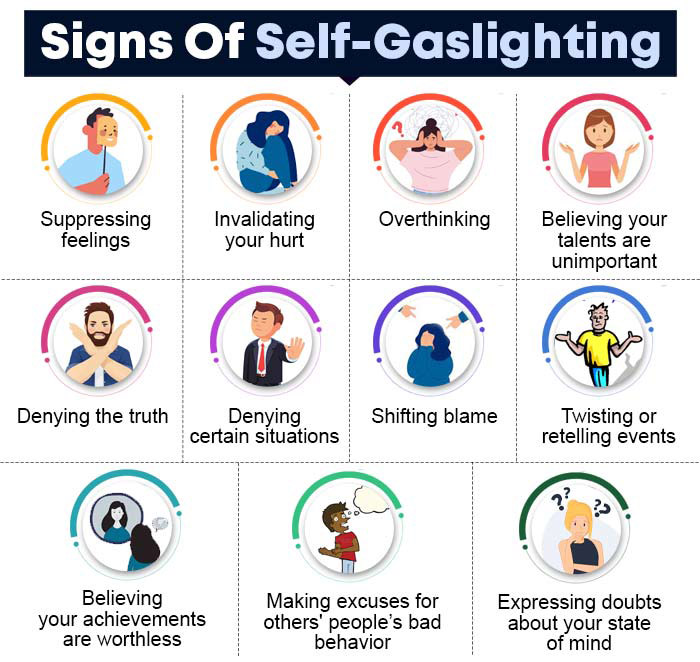
Victims often find it difficult to realize or understand that they are being manipulated by a gaslighter as their manipulation techniques are mostly covert and subtle.
Moreover, as the victim is generally emotionally or psychologically dependent on the dominant and authoritative abuser, they may not doubt the gaslighter’s intentions or judgments. This is why it is essential that the victims learn to identify the following signs of gaslighting:
- Constantly doubt own memories, judgments, and sanity
- Lack of self-confidence and poor self-esteem
- Persistently doubt themselves and feel confused
- Inability to make basic decisions
- Engage in self-blame, self-criticism, and negative self-talk
- Inability to enjoy pleasurable activities or feel joy
- Believe they are highly sensitive and overreact
- Repeatedly apologize to the abuser without any clear reason
- Feelings of helplessness, hopelessness, incompetence, and worthlessness
- Isolation and social withdrawal
- Difficulty sleeping 13 Bashford, J., & Leschziner, G. (2015). Bed Partner “Gas-Lighting” as a Cause of Fictitious Sleep-Talking. Journal of clinical sleep medicine : JCSM : official publication of the American Academy of Sleep Medicine, 11(10), 1237–1238. https://doi.org/10.5664/jcsm.5102
- Defend their abuser against family and friends
- Issues with self-identity
- Experiencing high levels of anxiety and even depression 14 Park J. I. (2018). Relationship between Emotional Abuse and Depression among Community-Dwelling Older Adults in Korea. Yonsei medical journal, 59(5), 693–697. https://doi.org/10.3349/ymj.2018.59.5.693
This form of psychological manipulation can also lead to trauma in the long run, especially when experienced with other forms of abuse.
Read More About Self-Esteem Here
Types Of Gaslighting
There are four primary types of gaslighting behaviors, including:
1. Straight-up lie
In this type of gaslighting, the abuser resorts to lying on the victim’s face. Over a period of time, the lies are strengthened to create a false narrative and fed to other people. Straight-up lying may also involve gossiping and perpetrating salacious rumors about the victim that causes damage to his/her reputation.
2. Reality manipulation
Here, the abuser ‘manipulates’ the victim’s version of reality, by denying and presenting a different version of the reality. The unpleasant events are twisted and given a different version from the one that actually happened.
3. Scapegoating
In this type of gaslighting, the abuser changes the narrative and shifts the blame onto the victim. Most of the time, the victim shoulders blame for mistakes, failures, inability to meet emotional and relational needs, etc.
4. Coercion
Coercive gaslighting involves a wide range of strategies—ranging from charm offensive to bullying and even violent behavior. The abuser uses pressure and manipulation to force the victim to accept ‘certain truths’ that make him/her question his/her sanity and state of mind.
Gaslighting Examples
A narcissist or abuser may use gaslighting as a form of psychological manipulation. This tactic often involves subtle or direct emotional and verbal abuse aimed at making the victim doubt their own memory, perception, or judgment. Over time, the person being gaslit may begin to question their reality and trust the abuser’s version of events instead.
Here are some of the most common gaslighting examples:
1. Countering
This tactic involves the abuser questioning the authenticity of the victim’s memories. The gaslighter may invent new details about an event or deny the occurrence of events as the victim remembers them. The abuser may say “You can never remember anything accurately,” or “Are you sure it happened like that?”
2. Denial
During this technique, the narcissist may pretend that they forgot about a particular event or some specific details about it. They may completely deny the truth and make the victim question their memory. The narcissist may say “I never said anything like that?” or “What are you even talking about?”
3. Withholding
The narcissistic person will refuse to listen, engage, respond or react to what the victim is trying to communicate. They may also pretend not to understand what the person being abused is trying to say. The gaslighter may say “You are not making any sense,” or “I don’t know what you’re talking about.”
4. Diverting
Using diversion, the perpetrator of the manipulation may change a topic or discussion and divert the victim’s focus and attention from a topic. This form of gaslighting challenges the victim’s credibility by assuming that they have a certain idea from others or are being brainwashed by their family or friends. For instance, they may say “Your friends are filling your mind with rubbish,” or “Who is putting these crazy ideas in your head?”
5. Trivializing
Gaslighters often make their victims feel like their thoughts and emotions don’t matter. They may do this by constantly belittling them or accusing them of being “too sensitive” or “overreacting.” Over time, this can make the victim question their own feelings and reality, leading them to believe they’re wrong or irrational.
To stay in control, gaslighters may also use tactics like lying repeatedly, twisting facts, or using harmful stereotypes based on the victim’s gender, race, age, or sexuality. These strategies are meant to confuse, isolate, and dominate the victim, key patterns seen in emotional and psychological abuse.
Gaslighting Phrases

The signs that you are a victim of gaslighting lie in the dynamic you share with the abuser and it shows in the way they talk to you or treat you. Some common phrases used for gaslighting in a relationship or at work include:
- That never happened!
- You’re too sensitive.
- You’re crazy—and other people think so, too!
- You have a terrible memory.
- I’m sorry you think that I hurt you.
- You should have known how I would react.
- You are making this up—there is nothing there!
How To Respond To Gaslighting
If you recognize the signs and tactics of gaslighting in your relationship, it’s essential to take action, this form of psychological manipulation can seriously impact your mental well-being. Here are some quick coping strategies to help you navigate and counter a gaslighter’s harmful behavior:
1. Gain a new perspective
Look at the situation from a different perspective, as if you are an outsider. Shifting your perspective will help you realize if you’re being truly manipulated and gain better clarity.
2. Don’t buy their lies
Remember that you are not responsible for their abusive behavior. It’s never your fault that they are abusive despite how much they claim that you provoked them. Don’t believe their excuses.
3. Focus on the truth
Do not allow the abuser to bend, distort and define your reality regardless of how confident they may be or how much you may doubt yourself. Focus on remembering the truth instead of paying attention to their opinion.
4. Don’t defend them
Instead of sacrificing your needs and happiness to feed their ego. Focus on building your self-esteem. An abuser will never be happy or satisfied with their victim’s efforts as they simply want to gain control over their target.
5. Don’t use logic with the abuser
One of the core aspects of gaslighting is pathological lying. They will deny everything you say and falsify the facts to win an argument. However, refuse to accept their judgments and conclusions which are based on lies.
6. Walk away
In extreme cases, it may be best to simply walk away from the situation and leave the relationship as the most important thing is to protect yourself and your mental health. If threatened with physical harm or violence, speak to law enforcement authorities or your loved ones and move to a safer place.
How To Deal With Gaslighting: Self-Help Tips
Here are some additional self-help strategies for dealing with gaslighting:
- Talk openly with trusted family members and friends.
- Seek validation and emotional support from your loved ones.
- Maintain a daily journal and write about the events, dates, times, etc. and mention the details.
- Document their abusive behavior by making videos, taking pictures, or audio recordings to check and validate the facts.
- Create a safety plan so that you can leave safely when required.
- Reach out to support groups or domestic violence hotlines.
- Seek therapy and talk to a counselor as this can help you better care for your mental health.
Takeaway
Gaslighting can be a devastating and seriously damaging manipulation tactic that makes you doubt your perceptions and question your sanity. This form of emotional abuse affects your social relationships and makes you emotionally reliant on your abuser.
However, identifying the warning signs of gaslighting and being aware of the manipulation can help someone take the first steps to overcome this controlling and abusive behavior.
Once you have learned to manage the adverse effects of such emotional and psychological abuse, take steps to trust yourself and rebuild your sense of self. It may take some time and patience, but with the determination and the support of loved ones, victims of gaslighting can recover.
In case, you find it difficult to cope with the psychological and emotional effects, then it may be necessary to seek medical help from a mental health professional. With therapy, you can make better decisions, build healthier relationships and live a happier life.
Gaslighting At A Glance
- It is a type of emotional and psychological abuse commonly observed in toxic relationships.
- This form of psychological manipulation can also lead to trauma in the long run, especially when experienced with other forms of abuse.
- The gaslighters make the victims feel that their thoughts and emotions have no value by belittling them or claiming that the victim is highly sensitive and overreacting.
- If you can identify the signs and techniques of gaslighting in your relationship, then it is crucial that you take steps to overcome this psychological manipulation.
- Gaslighting can be a devastating and seriously damaging manipulation tactic that makes you doubt your perceptions and question your sanity.
Frequently Asked Questions
1. What does gaslighting someone mean?
Gaslighting is a strategy that abusive people use to covertly manipulate another individual or a group of people and make them question their own memories, judgment, and sanity.
2. Is gaslighting abuse?
Gaslighting is a form of emotional abuse. It is extremely effective in compelling a victim to question their own feelings, instincts, and sanity, as well as handing power and control to the abusive party in the relationship.
3. Can gaslighting cause psychosis?
Gaslighting does not directly cause psychosis, but it psychologically impacts the person who is being gaslighted. It causes extreme mental distress, eventually leading to more severe mental health disorders.
4. What type of people is highly likely to use gaslighting?
Gaslighting is a manipulation tactic frequently used by narcissists, abusers, dictators, and cult leaders to gain control over people.
5. What are some famous movies about gaslighting?
The term “gaslighting” originated from the 1944-film Gaslight. Other movies are The Invisible Man, Rosemary’s Baby, Mother, What Lies Beneath, Sleeping With The Enemy, Breakdown, and Unsane.
6. How to deal with my family members gaslighting me?
Take control of the situation. Collect evidence and have an open discussion with them regarding their behavior and how it affects you. Remain confident of your version of the events and focus on self-care. If nothing works, cut them off and leave them as a last resort.
7. What is narcissist gaslighting?
Narcissistic gaslighting is a form of emotional abuse in which a person intentionally manipulates or distorts the truth to instill self-doubt in someone. Such self-doubt aggravates with time and causes a person to question his/her sanity and perception of reality.
